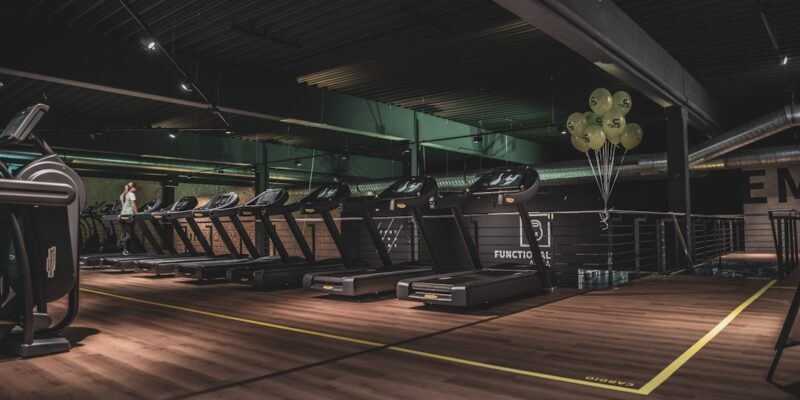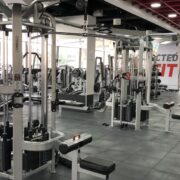
Get Fit: Beginner’s Guide to Effective Workouts
Exercise is an essential component of a healthy lifestyle. It not only helps to improve physical fitness, but it also has numerous benefits for mental health and overall well-being. Regular exercise can reduce the risk of chronic diseases, improve cardiovascular health, boost mood, and increase energy levels. In this article, we will explore the importance of exercise and how it can improve overall health and well-being.
Key Takeaways
- Exercise is important for overall health and well-being.
- Setting realistic fitness goals is crucial for success.
- Creating a workout plan helps to stay on track and achieve goals.
- Cardiovascular exercise has numerous benefits for the body and mind.
- Weight training helps to build strength and improve body composition.
Understanding the Importance of Exercise
Exercise has both physical and mental benefits. Physically, exercise helps to improve cardiovascular health, strengthen muscles and bones, and maintain a healthy weight. It can also reduce the risk of chronic diseases such as heart disease, diabetes, and certain types of cancer. Mentally, exercise has been shown to reduce symptoms of depression and anxiety, improve mood, boost self-esteem, and enhance cognitive function.
Regular exercise has been proven to reduce the risk of chronic diseases such as heart disease, stroke, type 2 diabetes, and certain types of cancer. It can also help to manage existing conditions such as high blood pressure and cholesterol levels. Exercise improves cardiovascular health by strengthening the heart muscle, improving blood flow, and reducing inflammation in the arteries. It also helps to regulate blood sugar levels and improve insulin sensitivity, which is important for preventing and managing diabetes.
Setting Realistic Fitness Goals
Setting realistic fitness goals is crucial for success in any exercise program. It is important to set goals that are achievable and sustainable in order to stay motivated and avoid burnout or injury. When setting fitness goals, it is important to consider your current fitness level, any limitations or injuries you may have, and your personal preferences.
One tip for setting realistic fitness goals is to start small and gradually increase the intensity or duration of your workouts over time. For example, if you are new to exercise, you might start by walking for 30 minutes a day and gradually increase the pace or distance as you become more fit. Another tip is to set specific, measurable goals. For example, instead of saying “I want to lose weight,” you might set a goal to lose 10 pounds in three months.
Creating a Workout Plan
| Workout Plan Metrics | Values |
|---|---|
| Duration of Workout | 60 minutes |
| Number of Exercises | 10 |
| Intensity Level | Intermediate |
| Frequency | 3 times per week |
| Targeted Muscle Groups | Legs, Arms, Back, Chest, Abs |
Having a workout plan is essential for staying on track and making progress towards your fitness goals. A workout plan helps to provide structure and accountability, and it ensures that you are targeting all areas of fitness, including cardiovascular endurance, strength, and flexibility.
When creating a workout plan, it is important to consider your goals, preferences, and schedule. You should aim for a combination of cardiovascular exercise, strength training, and flexibility exercises. It is also important to include rest days in your plan to allow your body time to recover and prevent overtraining.
The Benefits of Cardiovascular Exercise
Cardiovascular exercise, also known as aerobic exercise, is any activity that increases your heart rate and breathing rate. It is an important component of any exercise program because it helps to improve cardiovascular health, burn calories, and increase endurance.
Cardiovascular exercise has numerous benefits for the body. It helps to strengthen the heart muscle, improve blood flow, and reduce the risk of heart disease. It also helps to burn calories and promote weight loss or maintenance. In addition, cardiovascular exercise can increase endurance and stamina, making everyday activities easier and more enjoyable.
Examples of cardiovascular exercises include walking, running, cycling, swimming, dancing, and jumping rope. It is recommended to aim for at least 150 minutes of moderate-intensity cardiovascular exercise per week or 75 minutes of vigorous-intensity exercise per week.
Building Strength with Weight Training
Weight training, also known as strength training or resistance training, is an important component of any exercise program. It helps to build lean muscle mass, increase strength and power, improve bone density, and boost metabolism.
Weight training has numerous benefits for the body. It helps to increase muscle mass, which can improve overall body composition and increase metabolism. It also helps to strengthen bones, reducing the risk of osteoporosis and fractures. In addition, weight training can improve balance, stability, and posture.
Examples of weight training exercises include lifting weights, using resistance bands, doing bodyweight exercises such as push-ups and squats, and using weight machines at the gym. It is recommended to aim for at least two days of strength training per week, targeting all major muscle groups.
Incorporating Flexibility and Stretching
Flexibility and stretching exercises are often overlooked in exercise programs, but they are essential for maintaining joint mobility, preventing injuries, and improving overall flexibility.
Flexibility exercises help to improve range of motion in the joints and muscles. They can also help to reduce muscle soreness and improve posture. Stretching exercises can be done before or after a workout or as a standalone activity.
Examples of stretching exercises include static stretches, dynamic stretches, yoga poses, and Pilates exercises. It is recommended to aim for at least two days of flexibility training per week, targeting all major muscle groups.
Staying Motivated with a Workout Buddy
Having a workout buddy can be a great way to stay motivated and accountable in your exercise routine. A workout buddy can provide support, encouragement, and friendly competition, making exercise more enjoyable and effective.
One benefit of having a workout buddy is that they can help to keep you accountable. When you have someone else relying on you to show up for a workout, you are more likely to stick to your plan. A workout buddy can also provide support and encouragement when you are feeling unmotivated or discouraged.
Finding a workout buddy can be as simple as asking a friend or family member to join you for workouts. You can also join a fitness class or group exercise program where you can meet like-minded individuals who share similar fitness goals.
Avoiding Common Exercise Mistakes
There are several common exercise mistakes that can hinder progress and increase the risk of injury. By being aware of these mistakes and taking steps to avoid them, you can ensure that your exercise routine is safe and effective.
One common exercise mistake is doing too much too soon. It is important to start slowly and gradually increase the intensity or duration of your workouts. This allows your body time to adapt and reduces the risk of overuse injuries.
Another common mistake is using improper form or technique. It is important to learn the proper form for each exercise and to focus on maintaining good form throughout your workouts. This will help to prevent injuries and ensure that you are targeting the correct muscles.
Tracking Progress and Making Adjustments
Tracking your progress is an important part of any exercise program. It allows you to see how far you have come and provides motivation to keep going. It also helps you to identify areas where you may need to make adjustments or modifications to your workout plan.
There are several ways to track your progress. You can keep a workout journal where you record the exercises, sets, reps, and weights used for each workout. You can also use a fitness app or wearable device that tracks your workouts, heart rate, and calories burned.
When tracking your progress, it is important to be honest with yourself and celebrate small victories along the way. If you are not seeing the results you want, it may be time to make adjustments to your workout plan. This could involve increasing the intensity or duration of your workouts, changing up your exercises, or seeking guidance from a fitness professional.
Celebrating Your Fitness Achievements
Celebrating your fitness achievements is an important part of staying motivated and maintaining a positive mindset. It helps to reinforce the positive habits and behaviors that have led to your success and provides motivation to continue on your fitness journey.
One way to celebrate your fitness achievements is to set small, achievable goals along the way and reward yourself when you reach them. For example, if you have been consistently working out for a month, you might treat yourself to a massage or a new workout outfit.
Another way to celebrate your fitness achievements is to share your progress with others. This could involve posting about your accomplishments on social media, joining a fitness challenge or competition, or participating in a charity event or race.
Exercise is an essential component of a healthy lifestyle. It has numerous physical and mental benefits and can reduce the risk of chronic diseases. By setting realistic fitness goals, creating a workout plan, incorporating cardiovascular exercise, weight training, and flexibility exercises, staying motivated with a workout buddy, avoiding common exercise mistakes, tracking progress and making adjustments, and celebrating your fitness achievements, you can create a successful workout plan that will improve your overall health and well-being.
FAQs
What are some effective workout tips for beginners?
Some effective workout tips for beginners include starting slow and gradually increasing intensity, focusing on proper form, incorporating both cardio and strength training, and setting realistic goals.
How often should beginners work out?
Beginners should aim to work out at least three to four times a week, with rest days in between to allow the body to recover.
What are some good exercises for beginners?
Good exercises for beginners include walking, jogging, cycling, swimming, bodyweight exercises such as push-ups and squats, and using resistance bands or light weights.
How long should a beginner’s workout be?
A beginner’s workout should be around 30 minutes to an hour, depending on fitness level and goals.
What should beginners eat before and after a workout?
Before a workout, beginners should eat a small meal or snack that is high in carbohydrates and protein, such as a banana with peanut butter or a protein shake. After a workout, they should eat a meal that is high in protein and carbohydrates to help with muscle recovery, such as grilled chicken with sweet potatoes and vegetables.
What are some common mistakes beginners make when working out?
Common mistakes beginners make when working out include not warming up properly, using improper form, not resting enough, and not varying their workouts enough.


















